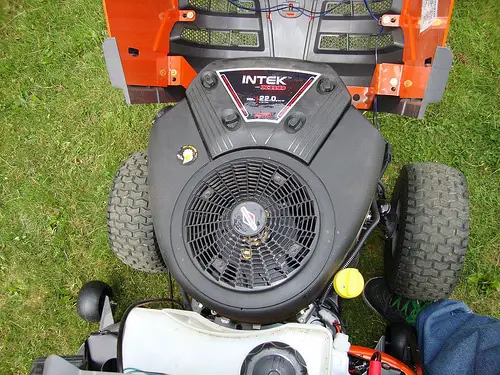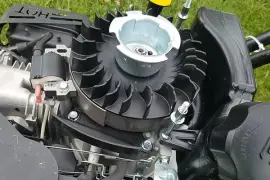The boring winter is gone and it’s time for mowing the lawn. I took off the cover of my riding lawnmower and placed the key to start the mower. But the mower didn’t start because the engine seized up.
Do you know how I identify when the engine is seized up? No? Ok. Don’t worry. I will share my experience with you in this regard.
You know a lawnmower engine is a vital part of the mower to run the mower. If it is seized, you won’t be able to start the mower.
In this article, I will try to give a clear idea of how to tell if a riding lawnmower engine is seized. I will also share with you how to fix a seized mower engine.
So, should you wait for more? No way. Let’s solve the issue.
In this content you’ll learn:
Reason For A Lawnmower Engine Seized Up

Basically there are a few reasons that are responsible for engine seize. Let’s see the actual reason for the engine to seize.
- If you don’t use your lawnmower for a longer period of time, then the engine becomes seized.
- Low engine oil level is another reason for the engine to seize. Lack of lubricants or oil oxidized the internal materials. Maintaining proper oil level really increases the durability of the engine.
These are some specific reasons for the engine to seize. Taking care of these problems saves you from this hassle and enhances the longevity of the lawnmower engine.
After identifying the reason, you need to fix it. Right? And to solve the issue, you need some tools that make the process easier for you. Let’s have a look at the required tools.
Required tools:
- Penetrating oil spray can
- Engine oil
Follow the process stated below to get a perfect solution.
Steps to follow:
Step #1: Drain The Oil
At first, purchase a penetrating oil spray can. Drain the full oil from the mower.
Step #2: Fix The Engine Seize Issue
Now, unplug the spark plug from the mower engine. Remove the mower engine and face up the mower spark plug hole to fix the issue of the engine seize.
Step #3: Apply Penetrating Oil
Spray an adequate amount of penetrating oil in the hole of the mower spark plug. Wait until the penetrating oil is fully set. Soak it at least one-hour in a combustion chamber.
Step #4: Move The Blades
After that, replace the engine in its previous position and try to move the piston of the engine up. Grip the lawnmower blade and try to move it forward and backward. It will help you reduce the dullness of the lawnmower engine. Continue the process until the engine is free to move.
Step #5: Refill The Oil Tank
Reinstall the spark plug. Now, take the manufacturers’ recommended engine oil and pour the oil in the oil tank until the tank is full.
Step #6: Turn On The Lawn Mower
After filling the oil tank, place the key in the keyhole of your riding lawn mower (if this doesn’t work, you can actually start your riding lawn mower with a screwdriver to try to get it going). Rotate the key to engage the engine.
If you have a push lawnmower, then pull the cord twice or thrice to turn on the power of the lawnmower.
When the mower turns on, give it at least five minutes to warm the engine.
You are all set now.
Cautions:
- Wear proper safety clothing such as hand gloves and goggles when you are doing any repair of the lawnmower.
- Don’t overfill the oil tank. Fill up to the limit specified by the manufacturer.
Final verdict
Really it’s not a big deal to identify the reason behind the riding lawnmower engine seized. Regular maintenance keeps the mower engine in good condition.
If the above-mentioned process won’t work for you, then you need to replace the lawnmower engine.
Hopefully, from this article, you got a clear idea of how to tell if a riding lawnmower engine is sized and how to fix it.
Now, it’s your turn. Identify the reason and fix the problem accordingly.
